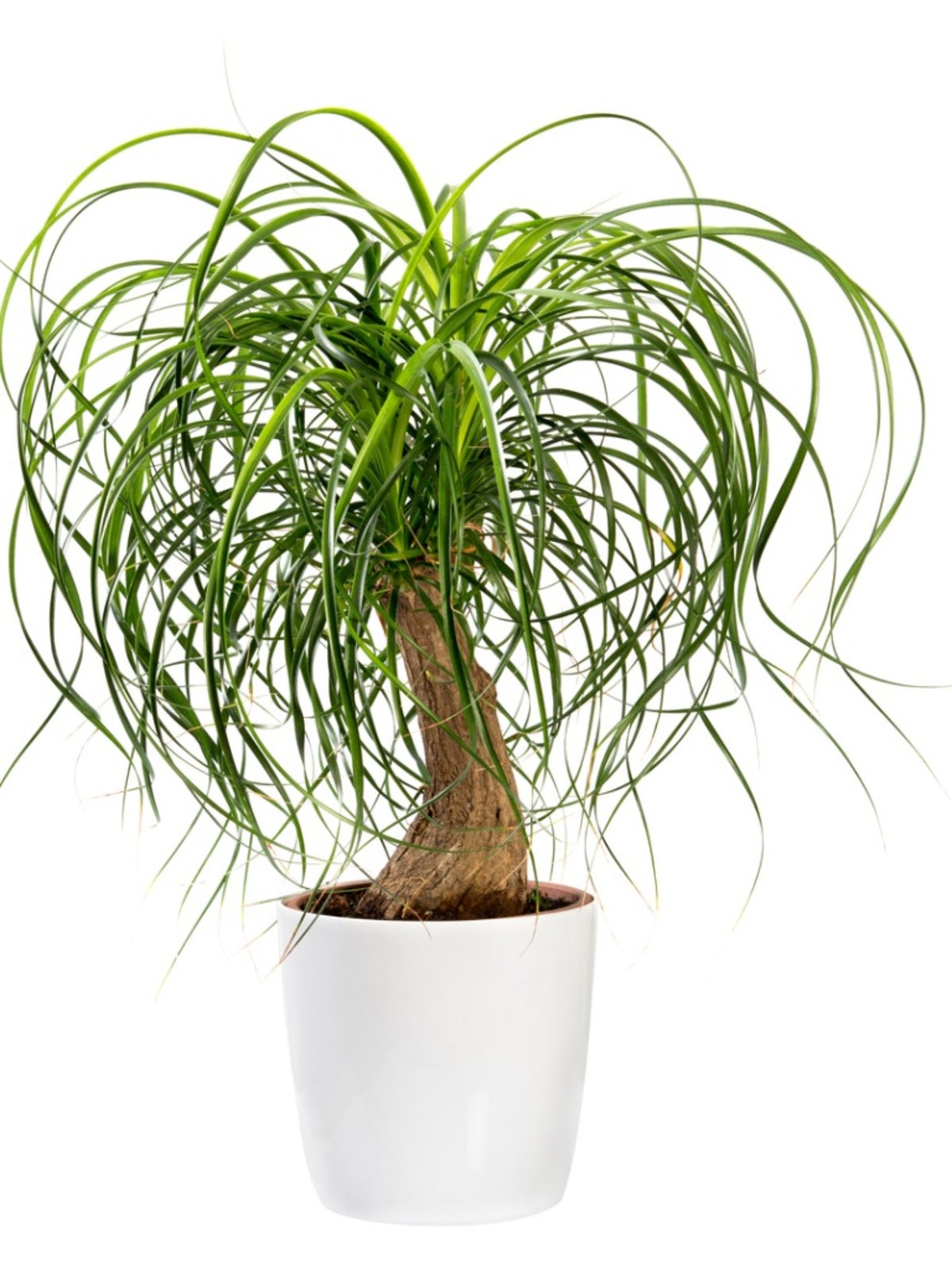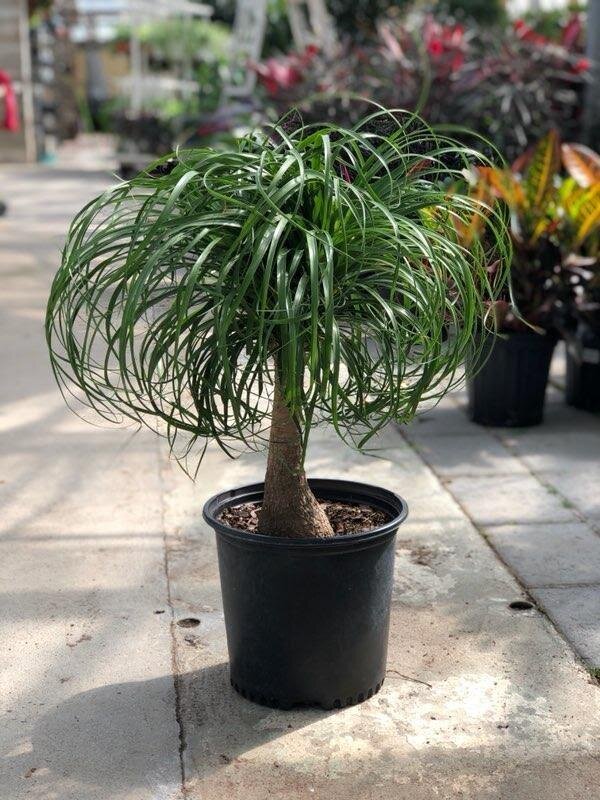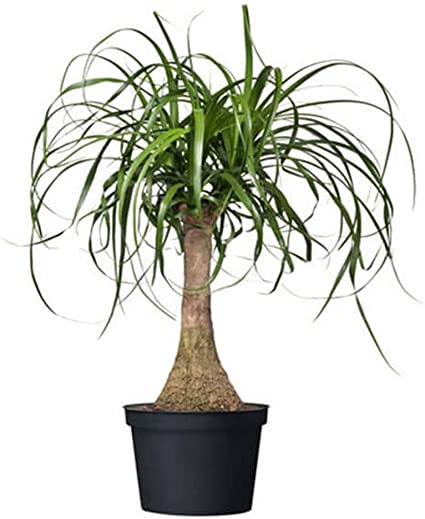Ponytail palm care: The name Ponytail evokes a haircut, and the plant’s many leaves give it a pony-like appearance. This palm is highly well-liked by gardeners and makes a wonderful houseplant. It features a bulb-like stem with a straight leafy stem that resembles a truck.
Ponytail is Beaucarnea recurvata, and although it is simple to care for, it grows quite slowly. This plant can withstand days of light and prefers watering about once per week.
This particular plant was utilized as an ornamental and is native to Mexico. It belongs to the family Asparagaceae. Due to the exposure to lush landscapes, it gained a lot of popularity in Europe.
Table of Contents
Ponytail palm Care
Purchase a ponytail palm:
Purchase on Amazon
Purchase on Etsy (recommended)
Ponytail palm Propagation
The steps for growing ponytail palms are as follows:
1 . First and Most important thing is to Sterilize the cutting tool.
You need a cutting tool or knife that must first be sanitized if you want to really cut the newborn palm. These palms are susceptible to bacterial or fungal infections.
2 . Take out the offshoots or baby palm.
Use the cutting tool to now remove the offshoot, being careful not to cut the caudex that is its growing, little foundation. NOTE: The branch needs to be 4-6 inches tall.
3 . Use fungicide power to cover the area where to take out the baby palm.
If the wounds are not treated with antifungal powder or spray, as you are aware, fungus might infect the trunk or base root. For my ponytail palm, I’m using Captain fungicide, which is working just great.
4 . Prepare a pot with well drained soil.
Use any soil and thoroughly combine it with 20% perlite.
5 . Place the baby Palm in a new pot.
Place the baby palm or branch in the pot you just made.
6 . Protect the existing Ponytail palm.
Protect your palm when it rains; if your palm has fresh wounds (from where you remove the baby palm), you shouldn’t let them get wet as this could lead to fungus infections since the fungicide’s effectiveness might be washed away.
7 . Water the new baby palm.
It’s time to water it now, and the pot needs to have enough holes for the water to drain freely. Keep the soil mostly dry because roots can only grow in dry soil. Keep in mind not to moisten the soil excessively.
8 . It will take time for roots to come.
The roots may take some time to grow in; for more information, see the section below on difficulties with ponytail palms.
Although the movie below is in a language other than English, it is clearly described so you should be able to understand it.
How to prune ponytail palm
Some individuals wish to prune because the tree is unhealthy or the tips are turning yellow or brown. At that point, you can prune if there is a drought or a problem with the soil.
What you need is a nice pair of shears that have been sanitized and are thoroughly clean to prevent the spread of bacteria. Although pruning can be done at any time of the year, the growing season from spring to fall is the finest.
Find the damaged, sickly, and pale leaves so you can prune them. Additionally, some yellow, brown, or wilted leaves that need cutting may be present. Your ponytail palm will feel healthy and new growth will start to sprout if you simply clip them as usual.
problematic ponytail palms
Pests called spider mites can consume plant cells, leaving white patches on different parts of the leaves, and they won’t stop until all of your plants have been devoured.
Mealybugs are a nuisance (bug) that are simple to spot if you ever notice white powder on plants. This bug can take all the juice from plant leaves, causing them to wilt, droop, or occasionally turn yellow.
Overwatering occurs when a plant receives only regular water and insufficient sunlight to dry it. Please make sure it receives adequate lighting, limit watering, and provide it in accordance with the number of days needed for the soil to dry out.
Underwatering can be a problem, and gradually you’ll notice that your plant is beginning to turn yellow, then brown, and finally it will begin to droop.
Use Bonide Pesticide, which has worked for me since I’ve been using it for a while, to get rid of bugs and pest problems.
Ponytail palm poisonous to peoplePonytail is not poisonous to humans, dogs, cats, or horses, according to the ASPCA. This plant is risk-free and can be cultivated without concern in any landscape, including lawns and gardens. They can withstand drought.
and can withstand temperatures higher than 45 °F.
brown tips on a ponytail palmThis may be a problem if fertilizer is applied outside of the growing season during the winter instead of according to the recommended ratio. The second cause is difficulties with excessive watering that can be resolved by shortening the irrigation duration.
If the soil appears to be dry, always examine it before watering. Finally, see if it is receiving more sunshine than it usually needs.
How to train a ponytail palm to develop many trunks If the main stem is cut off at the top, several tiny trucks may sprout. It will take some time for it to grow back; it will first need to wait until the end of the winter.
First, seal the cut area with candle wax to avoid bacterial or viral infection. Use a pruning sealer or candle wax to do this. When plants were trimmed from a part that would contract a disease, these same things were used.
Broken palm top of the ponytail If the top of your palm tree is completely broken off, what is left is the base caudex and half of the trunk. Now cover the wound with candle wax and then fill the foundation with a mixture of succulent and cactus roots.
Palm seedlings or new roots will sprout. You only need to wait a few months because this growth takes time; a complete ponytail palm will appear in one to one and a half years.
Long Ponytail palm leaves Actually, the ponytail palm’s leaves occasionally grow out of control, which is typical. This is an indication of good care and is unrelated to any problems. I’ve seen a lot of people ask this topic, but it appears to be healthy and attractive and poses no issues. Simply cut back on the fertilizer if you want to see shorter leaves.
Ponytail palm’s leaves were completely lost.
This might be the result of overwatering or the placement of your ponytail palm in an area that is too chilly for it to tolerate for too long. If so, you may have noticed that your palm’s leaves have all fallen off. This problem can be resolved by placing them in warmer environments or in the sun and feeding them water every three days.
See also:
Utilizations, Life Cycle, Habitat, and Adaptations of Bladderwort (Utricularia)
Is Plumbago Toxic to People – (With Full Details)
Canines are honeysuckle poisonous? Possible Varieties, Seeds, and Eating?
Spider Plants Care: A Beginner to Advanced Guide to Propagation and Pruning



